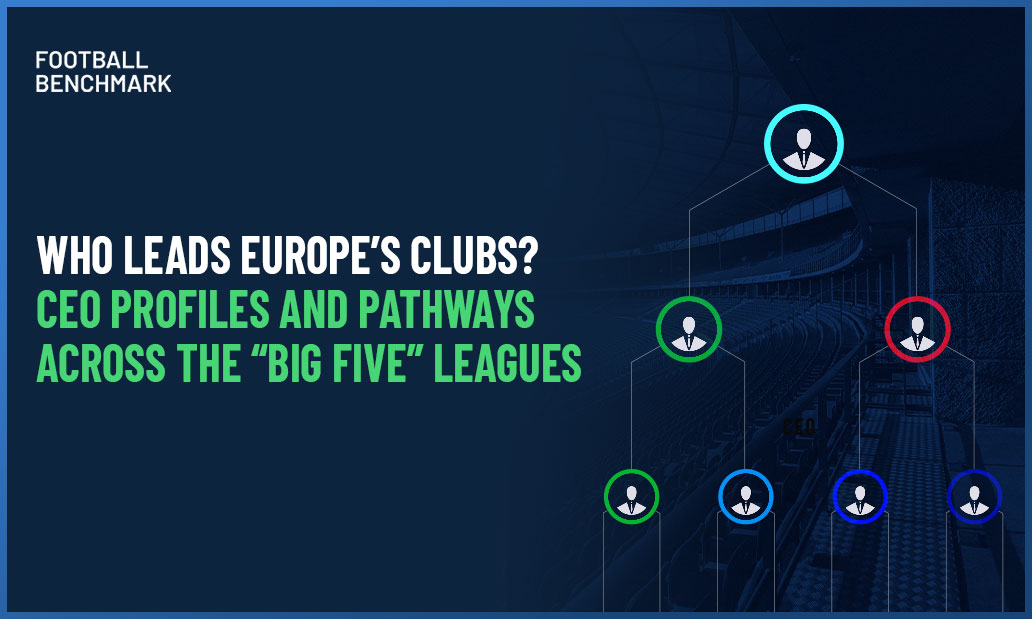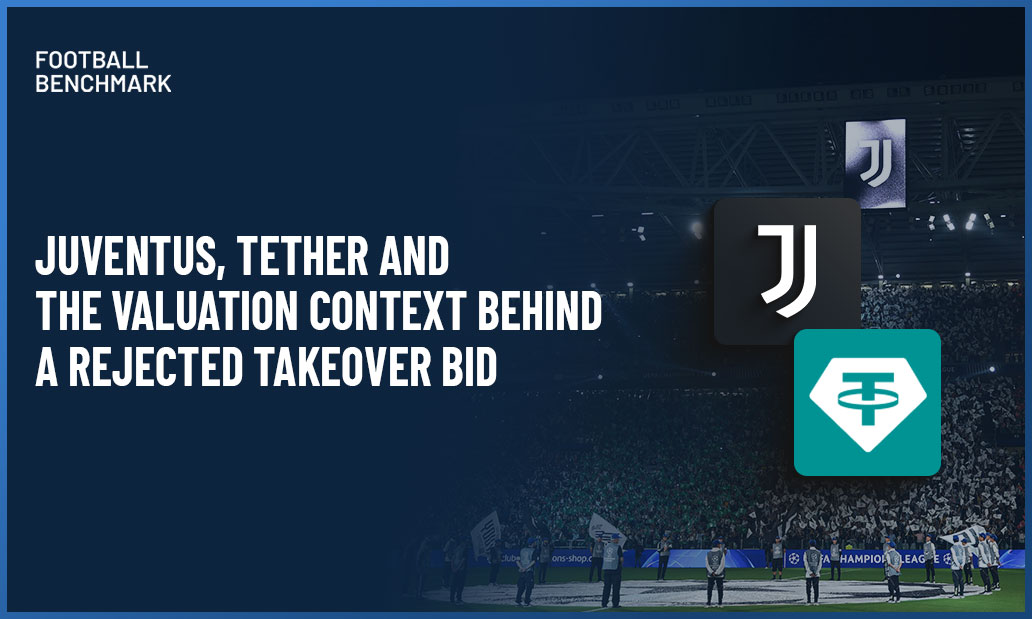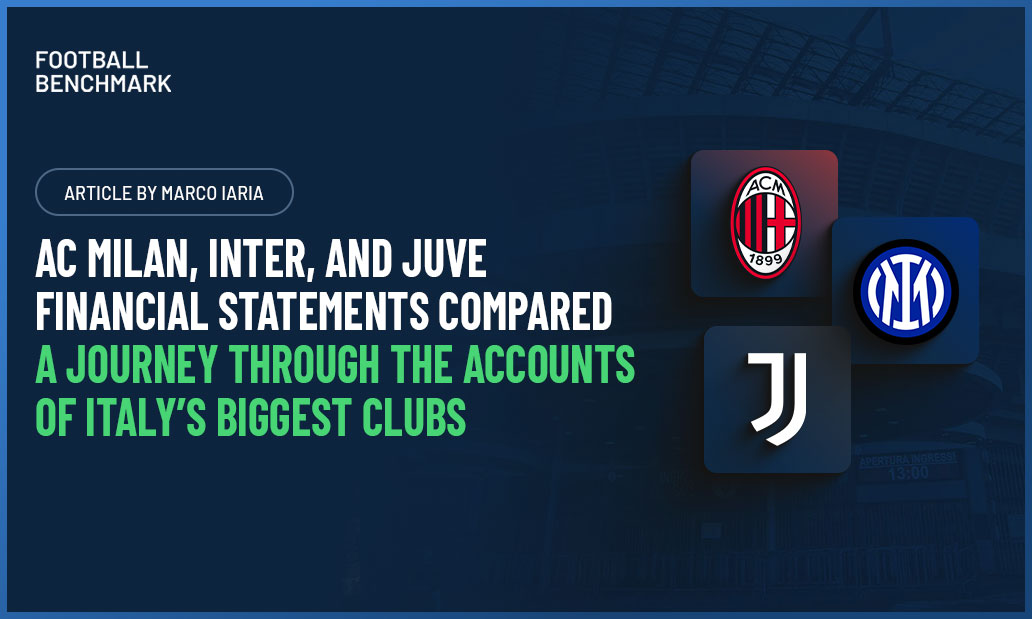
Modern football is shaped as much in the boardroom as on the pitch. At the centre of this transformation is the Chief Executive Officer, the figure tasked with steering clubs through the complexities of global finance, commercial growth, and sporting ambition. Once dominated by chairmen or part-time directors, club leadership has professionalised, and the CEO role has become central to how ownership vision is translated into day-to-day action and long-term strategy.
Following our recent analysis of Sporting Directors, this research continues our series on leadership roles in European football. It examines the CEO landscape across the “Big Five” leagues (Premier League, LaLiga, Bundesliga, Serie A, and Ligue 1) as of September 2025, with a particular focus on professional backgrounds and career pathways.
The findings reveal that CEOs tend to remain in office for more than twice as long as Sporting Directors, that commercial expertise now outpaces football-specific knowledge, and that prior experience within clubs is the most common pathway to the role. At the same time, the data confirms that the traditions and governance structures of each market remain highly influential in shaping who leads Europe’s clubs.
Where the CEO role is not explicitly identified by the club, the most senior executive position (e.g. Executive Chairman, Executive President) has been considered for the purpose of this analysis.
Tenure and stability
The average tenure of a CEO across the “Big Five” leagues stands at 7.2 years, based on an analysis of 95 CEOs across the leagues. This is a striking contrast to the 2.6-year average of Sporting Directors. CEOs are also typically older, with an average age of 53.4 compared to 48.6 for Sporting Directors, reinforcing the perception of the CEO position as a role of greater stability and seniority.
There are, however, notable differences across leagues. LaLiga records the longest average CEO tenure at 9.4 years, followed closely by Serie A at 7.9 years. Both leagues are characterised by a relatively high number of long-standing owners who remain directly involved in executive leadership. The Bundesliga, with an average of 7.5 years, also reflects its emphasis on governance continuity.
By contrast, the Premier League registers the lowest figure at just 5 years. These averages mask a combination of extremes: long-serving leaders such as Paul Barber at Brighton & Hove Albion or Ferran Soriano at Manchester City, alongside no fewer than eight clubs where the CEO has been in post for less than one year. Ligue 1 sits slightly below the overall mean, at 5.8 years.
Professional backgrounds
The professional profiles of club CEOs further illustrate the changing demands of football leadership.
Our analysis of 72 individual cases, after excluding those with direct ownership ties from the initial sample, shows that the single largest group - 22 CEOs accounting for 31% of the total - comes from commercial and media. This reflects the game’s increasingly commercial orientation.
The Premier League is especially prominent in this regard, with nine of its CEOs falling into this category, a natural consequence of the league’s global reach and reliance on broadcasting revenues. Billy Hogan, who rose from Chief Commercial Officer to CEO at Liverpool, and James Holroyd, who joined Burnley after senior commercial roles at Manchester United and adidas, are two illustrative examples.
Finance specialists (17 CEOs) represent the second most common category, with 24% of the total, with a strong concentration in Italy. This is consistent with the Serie A context, where clubs are often defined by significant transfer spending but must operate lean and efficient structures off the pitch.
Football-specific (i.e. technical) backgrounds (16) account for a further 22% of the group. These profiles are most prevalent in France and Germany, two markets where clubs’ commercial reliance on predominantly domestic economies may reinforce the value of football knowledge over purely commercial credentials. Olivier Létang of LOSC Lille and Stefan Hofmann of Mainz 05 exemplify this tradition. The remaining profiles include legal professionals, operational managers, and other backgrounds, each representing a smaller share of the sample.
Pathways into the role
Pathways into CEO positions are equally shaped by governance and market context.
Our analysis demonstrates that ownership-led leadership (23 out of the 95 analysed CEOs) remains widespread in Europe, particularly in Spain, Italy, and France. In such cases, long-serving figures often provide continuity and a clear strategic direction, as seen with Luca Percassi at Atalanta, Aurelio De Laurentiis at Napoli, Fernando Roig Negueroles at Villarreal, or Ángel Torres Sánchez at Getafe. Some of these leaders have overseen their clubs for well over a decade, highlighting how ownership involvement can deliver stability that is difficult to replicate otherwise.
Among appointed CEOs (i.e., non-owners), two routes dominate. The first is internal promotion, with a total of 29 CEOs arising from within the same club. The Bundesliga stands out in this respect, with eleven of its CEOs promoted internally, a reflection of the German model of stability, cultural continuity, and identity.
The second is the external hiring of executives with prior leadership experience at other clubs (28 CEOs). This pathway is particularly visible in the Premier League, whose financial strength and global appeal make it an attractive destination for proven executives. Recent examples include Vinai Venkatesham, previously of Arsenal and now at Tottenham, Francesco Calvo joining Aston Villa after spells at Barcelona, Juventus, and Roma, and Lina Souloukou’s appointment at Nottingham Forest following roles at Roma and Olympiacos.
Other pathways, while significantly less frequent, remain relevant. Hoffenheim’s Markus Schutz, for instance, entered the role in 2024 after a legal career, while Brentford’s Jon Varney has led the club since 2019 following a career in sports marketing. In some cases, CEOs are drawn from the wider ownership group’s companies, as with Maurizio Scanavino at Juventus, who joined from EXOR’s GEDI Group.
Beyond pathway and professional background, while still under-represented, female leadership in European club football is growing. Recent appointments such as Michelle Kang at Olympique Lyonnais, Lina Souloukou at Nottingham Forest, and Marian Mouriño at Celta Vigo signal a positive trend that is likely to gain further momentum in the years ahead.
Another emerging trend is long-serving executives acquiring minority ownership stakes in the clubs they lead, reinforcing both their commitment and influence. Paul Barber at Brighton & Hove Albion (1.5%) and Giuseppe Marotta at Inter (2%) are two recent examples of this development.
Market-specific realities
The analysis highlights both common traits and market-specific distinctions. Prior experience within clubs emerges as the single most important attribute, underlining how strongly the industry relies on leaders who understand football’s unique demands - public scrutiny, dependence on on-pitch results, and the need to balance complex operations with limited resources.
Commercial expertise, meanwhile, has become increasingly important across Europe, and particularly in the Premier League. At the same time, football knowledge remains central in Germany and France, where cultural and structural traditions still shape leadership requirements.
What is clear is that there is no universal template for the CEO role in European football. Governance structures, cultural context, and strategic priorities - whether centred on commercial growth, player trading, or operational efficiency - continue to determine both who leads and how long they endure. In practice, a CEO in LaLiga often looks very different from one in the Premier League, Serie A or the Bundesliga.
As football professionalises further, CEO profiles will continue to diversify. Yet local realities and traditions remain decisive in defining the position. For investors and owners, recognising these dynamics is essential: selecting the right leadership model is as critical to success as an effective transfer strategy.
Football Benchmark works with investors before, during, and after transactions to assess and design organisational structures, ensuring that governance and leadership are aligned with the market context and the long-term ambitions of each club.




